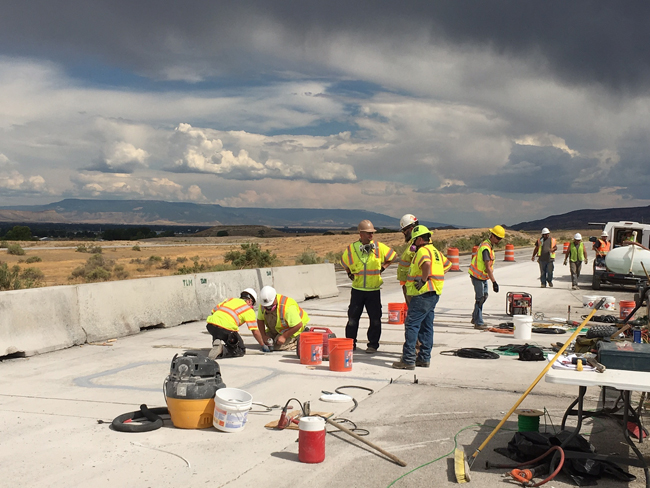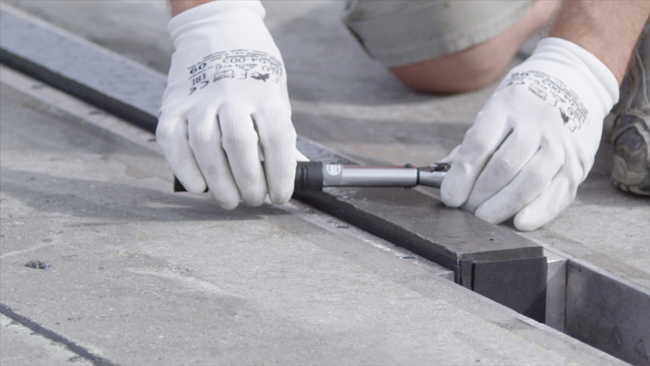
Much has changed in the Weigh in Motion (WIM) industry over the last five years. But asked to pick just one advance that really stands out, Andy Lees, business support manager,
Tomas Pospisek, business development manager EMEA, Kistler, believes this is a function of another big change - the way the industry is now viewed by operators. “Simply speaking, WIM has matured in the sense that is now being perceived by road operators as standard, trustful and proven technology not only for data collection but also for enforcement and tolling.”
Florian Weiss, CEO of
Libor Sušil, marketing and business development manager at Cross Zlín, agrees but points out that there are still problems. “Many countries are looking forward to [direct enforcement], but most of them face the legislation process and it takes years to move things forward. This is why there are only two countries have the legal framework and EIM direct enforcement live – Czech Republic and Russia.”

Current obstacles
Turning to the biggest current difficulties in the development of WIM systems – such as legislation, cost or culture – the answers from ITS International’s informal ‘panel’ are more diverse.
Dr Wang Dengjiang, VanJee WIM algorithm engineer, offers a global view from a Chinese perspective. “At present, there are still many obstacles which need to be handled in order to construct a healthier WIM industry ecosystem around the world,” he suggests. “For different countries, the legislation and regulation should be developed under the same framework, especially in the case of the measurement criteria of WIM sensors. Drivers from different countries also have different driving behaviours. In China, in order to escape the punishment or pay less toll, the drivers will play some tricks to lighten the weight of the vehicle. A more adaptive product or relevant law should be designed and pushed forward in order to make the WIM industry more prosperous.”
Drivers are not the only ones who might cause problems; customers sometimes have to be reminded of what the WIM industry is capable of delivering – and what it is not. “There have always been technical and physical limitations of the technology that are sometimes not understood well by some users,” says Pospisek. “Some of them are expecting quite unrealistic performance in the real conditions that are very far from optimal, especially bad road parameters.”
Another potential barrier can be seen in the cost of maintenance and service. “If most WIM systems require to rebuild a very big part of the WIM system, if there is a necessity to change a sensor in the road, it is an unacceptable issue,” says Sušil. “Nobody wants to close road for days, cut the road and make a lot of construction work again and pay for all of it just because of changing a road sensor. Unfortunately, currently used sensors have a very limited life-span and everybody knows it. Fortunately, new sensors are coming to the market to resolve these problems.”
Legal frustration
These concerns aside, that dark cloud of legislative uncertainty is never far away. “The major complication that probably prevents wider deployment of enforcement WIM system is the legislation, more specifically lack of a really universally-accepted international standard for high-speed WIM,” he continues.
Legal issues are certainly one of the main stumbling blocks to seeing the further expansion of direct enforcement, agrees Lees. “We already know that some countries such as the Czech Republic and Hungary have this legislation on their statute books whilst others are actively looking closely at introducing it in the near future,” he says. “However, there are some countries that are suggesting that unless 100% accuracy can be achieved for 100% of the observations for 100% of the time, then ‘no’ would be the answer. This degree of uncertainty is certainly frustrating for the WIM industry as it begs the question: is it worth the considerable investment in developing this level of accuracy when the market may be limited?”
He thinks more light may be thrown on the matter during the eighth international conference on WIM (ICWIM8) which will be held in Prague in May. Sušil takes up the point: “Though there are activities to define WIM international standards, most countries apply a ‘national process’ to evaluate opportunities in terms of new technologies (which is a never-ending story) and local specifications reflecting typical behaviour, local customs and conventions and even local issues and problems to solve. The final result is a status of ‘on hold’ very often.”
Certifiably maddening
The frustration is palpable – and certification is another issue about which there is a level of disquiet, in part because of the number of different specifications in international usage.
Pospisek sums up the problem. “There is no truly accepted standard for high-speed WIM systems yet,” he says. “For enforcement applications there is always a specific norm locally. Certification in one country is not accepted in other country, the process usually has to be repeated from scratch - that obviously creates unnecessary costs. The solution is not fast and easy but we should all try to contribute and help to create such standards.”
From ASTM E-1318 (US) and COST323 (Europe) for high-speed WIM, and OIML R134 for low- and medium-speed WIM, there is a lot to think about. The latter is recognised globally as a metrological standard that most countries would accept for enforcement - but Wang believes there is a problem and recommends that simplification is called for, saying that requirements for OIML R134 are “extremely strict”. “The cost of time and money is pretty high, and to some extent, the high barriers make it hard for some products to pass the OIML R134 testing,” he goes on. “In order to make the international certification more effective, a better certification which can be more easily operated should be formulated.”
While Weiss is not concerned about the difficulty of OIML R134, the sheer length of the national application process for WIM certification is a challenge. “In some countries it just takes too long,” Weiss says. “Even though OIML is an international standard, we have to get type approval and national approval. In the European Union we should have more or less identical requirements – yet still it can take time, depending on the different countries. Some are fast, some are also slow, whether by accident or design. It is important to assure that the OIML R134 testing procedures are the same all over.”
Lees does not see a general problem but acknowledges that there is “some confusion within the market on which system to adopt and in particular understanding exactly which specification covers which application”. He suggests that Netherlands-based NMi’s cover-all standard, launched a few years ago, is seen as a “practical, yet well-founded, international standard that covers all applications of WIM systems”.
Horizon scanning
And so to the future. Having cast their minds back five years at the beginning of this discussion, it seems only reasonable to consider what might be the biggest advance in WIM by 2024.
Lees sees the continuation of the adoption of direct enforcement around the world. “Certainly this is an area Q-Free would like to explore further but, as mentioned earlier, the market will need to develop further to warrant the investment required to develop this level of accuracy,” he concludes.
Wang thinks major progress in WIM will come through the use of artificial intelligence (AI), 5G and other advanced technologies. “Supported by low-cost sensors and large amounts of road weighing data, AI algorithms can be used,” he explains. “Nowadays, all the weighing calculation models are hand-designed functionality. The application of AI algorithms which use a statistical model can make weighing more accurate and reliable.”
Sušil feels precision will be the key: “Coming with a more precise WIM system (+/- 3%; actually +/- 5% is a limit) to extend the system’s life-span, cut maintenance and service costs significantly and offer a new application landscape, such as toll-per-tonne.”
For Pospisek too, the accuracy and reliability of WIM systems will continue to grow. “This will enable us to use the measured data for high-demanding applications like direct weight enforcement and tolling by weight on more markets,” he points out. “Also very important are the new functionalities which can be provided via WIM. The technology can protect road infrastructure such as bridges by stopping heavy vehicles. Moreover, WIM can also detect flat tyres, which are a big safety issue in many countries.”
Weiss agrees that WIM can have a key safety role. “Globally, WIM is getting much more popular and accepted by road authorities to use for things like tolling and enforcement and to help in terms of infrastructure management,” he says. “Look at the collapsed bridge in Genoa, Italy. In Germany, for instance, we have hundreds – perhaps thousands – of old bridges. To install a WIM system is a small part of an authority’s annual maintenance costs. Engineers need real data rather than estimated data.”
So, what are you doing now?
ITS International asked the ‘WIM panel’ what is on their own radars. Cross Zlín points to its OptiWIM system, which is already well established in the market. Kistler says it will continue to address a variety of different user needs – from a data collection system based on the new subsurface Lineas Compact sensor to complex multilane free-flow highway WIM systems with KiTraffic Plus. VanJee is enthused by a project which uses a deep learning algorithm to calculate vehicle weight. Meanwhile, Traffic Data Systems is working towards the next level of OIML R134 certification and is cooperating with the City of Hamburg – host of the ITS World Congress in 2021 - on a WIM research project.











